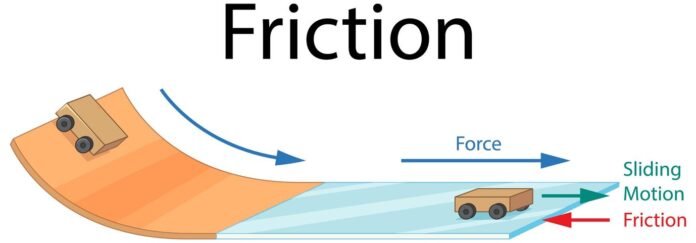Introduction
It is known that the friction between two bodies in contact with each other is called static friction. This static friction has a restraining value known as the limiting friction of those objects. The compulsory maximum force to move an inert body is called the limiting friction force. The force that is felt daily when a surface is pushed against an object placed on that surface is called the normal force.
Read on for details on the relation between the force of limiting friction and normal reaction and to fill the coefficient of friction between a block and a surface(horizontal). An experiment has been discussed below, along with the details regarding limiting friction force and normal reaction.
Force of Limiting Friction
The maximum friction required to move two static objects/ surfaces in touch is called limiting friction. In easy terms, static friction having a limiting value is called limiting friction. There are a few laws for limiting friction which is given below:
- The direction of motion of an object and the direction of limiting frictional force will always be opposite to each other.
- The limiting force of two surfaces in touch will always act as their tangent.
- The magnitude of normal force and limiting friction between two objects/ surfaces in touch will be directly proportional.
- The limiting friction force depends on the nature of the surfaces in touch, the material of the objects/ surfaces, and the smoothness of the surface.
- The limiting friction force does not depend upon the shape of the object/ surface and the area of surfaces.
Normal reaction concept
The reaction is the force exerted on an object by a surface in contact with it, which prevents it from passing through the surface. The reaction or normal force is perpendicular to the surface and is the only force exerted by the surface when all other frictional forces are inactive. It is the force that holds two objects/ surfaces together. There is a relationship between the limiting force and the normal force in that the limiting force increases as the normal force increases. The formula for this is:
F = µN
Below is the experiment that proves this relationship and will also help find the value of µ, i.e., the coefficient of friction for two surfaces.
Experiment
Aim
To find the relation between limiting friction force and force of normal reaction, and the value of friction coefficient between a horizontal surface and a block.
Material Required
● A wooden block.
● Horizontal plane, with a pulley at one end, which is frictionless
● 50g weight.
● Pan.
● Spring balance.
● Thread.
● Spirit level.
Procedure
- Before starting the experiment, check the pulley is frictionless. The horizontal plane must be clean.
- Weigh the block before putting it on the horizontal plane.
- Hang one end of the wooden block to the pulley and pass on the thread.
- Before attaching the thread to the pan, weigh the pan.
- Tie the pan to the other end of the thread and leave it hanging vertically.
- Put the provided weight on the pan to pull the wooden block easily.
- Tap on the horizontal plane to make the wooden block slide.
- Keep adding weights to the pan and tapping on the plane till the wooden block slides.
- Note down the weight on the pan and write them in the observation table.
- Carry out again steps 8 and 9 by increasing the pan’s weight by 50g or 20g.
- Repeat these steps up to six to seven times and write down the observations.
- See the table using the experimental data.
Observations
Make sure to put all the observed data in a tabular form, and find out the weight of the wooden block and the pan.
Through this data, prepare a graph showing the relation between limiting friction and normal force. The normal force is taken along the x-axis and the friction force is taken along the y-axis. The graph of this experiment results in a straight line.
Results
Through the experiment and the graph constructed, the limiting friction force of an object is directly proportional to the normal strength of a surface. The chart also provides a slope of a straight line. This slope is the coefficient of friction force between the horizontal surface and the block.
The value of the coefficient µ is 0.5 and is a constant.
Precautions
- Make sure that the plane is horizontal.
- The thread between the pulley and the wooden block must be horizontal.
- The pan used should not rotate.
- Make sure that the weights are added in small quantities.
- Tapping on the horizontal plane should be done gently.
- Pulley used should be frictionless.
Recommended Articles:
Physics – To Verify The Laws Of Parallel Combination Of Resistances Using A Metre Bridge Experiment
Types of Connectors
Types of DC Motors and Their Uses
Types of Forces
Types of Friction
The pulley is frictionless to observe the exact values of the weights. The maximum compulsory force to move two objects or surfaces in touch with each other is called the limiting friction force. The force observed by the surface on an object without any additional friction force included to prevent the object from passing through the surface is called normal reaction force. The coefficient used along with the limiting friction force and normal reaction force is called µ, and its value is equal to the ratio of the limiting force and the normal force.. The graph plotted between the limiting friction force and normal reaction is of a straight line with a slope called µ. Vegetables Names FAQs
Why do we take a frictionless pulley in the experiment?
What is limiting friction force?
What is normal reaction force?
What is µ, and what is its value?
What is the shape of the graph plotted between limiting friction and normal reaction force?
